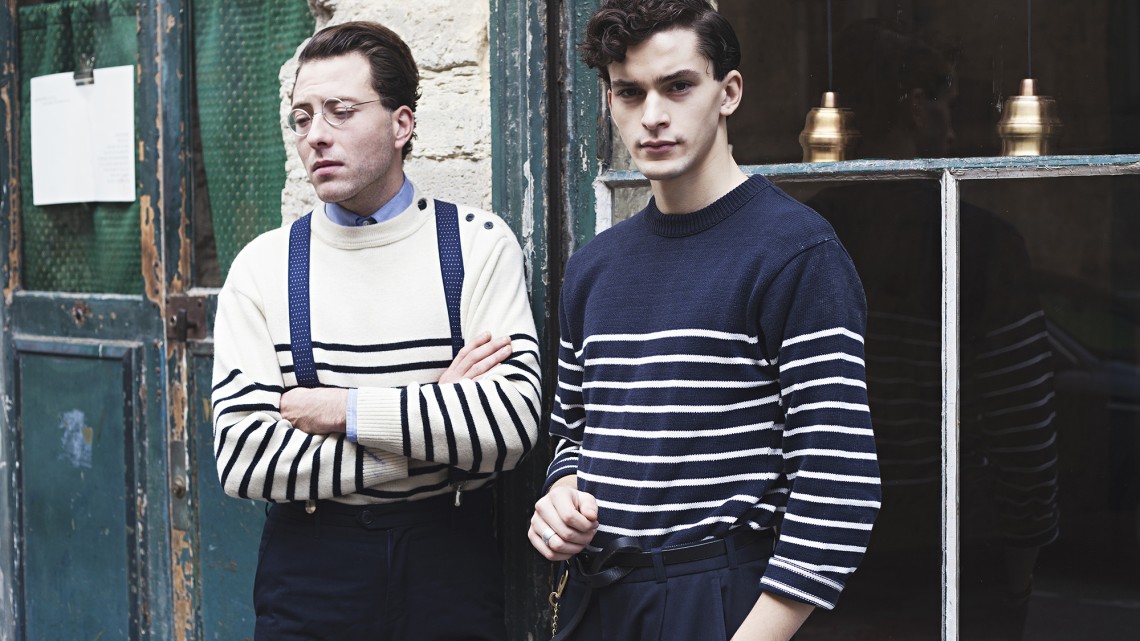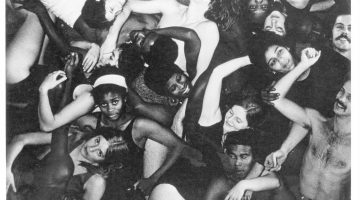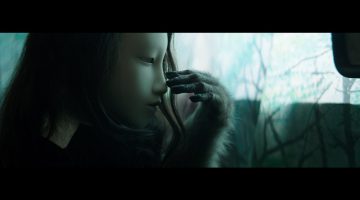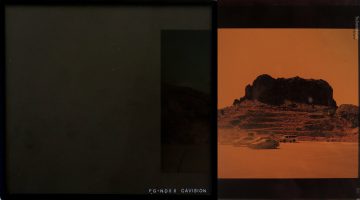First Chapter : Des Absents
Cercle de la Horla
16, rue du Vertbois 75003 Paris
October 23 – December 18, 2015
Within this heavy breathing world of ours, there do exist some very particular projects; naive, genuine yet somehow scientifically organised projects, that attempt to give you an altogether different experience of what is already in front of you. The Paris-based Cercle de La Horla project—The Horla Circle—is one such project. Orchestrated by the French Engineer Edgar Sarin, this project, beyond questioning the exhibition space itself, aims to blend together the space for showing and for creating.
The crowd is dramatically involved in the exhibition, which inexorably offers another level of attention to the artworks—to consider them almost as sacred entities—and, last but not least, gives opportunity to randomness and coincidence. The first chapter of La Horla is what it will become. One simple idea is at the core of the project; for 56 days, “place nine different artworks in an room, and observe what happens.”
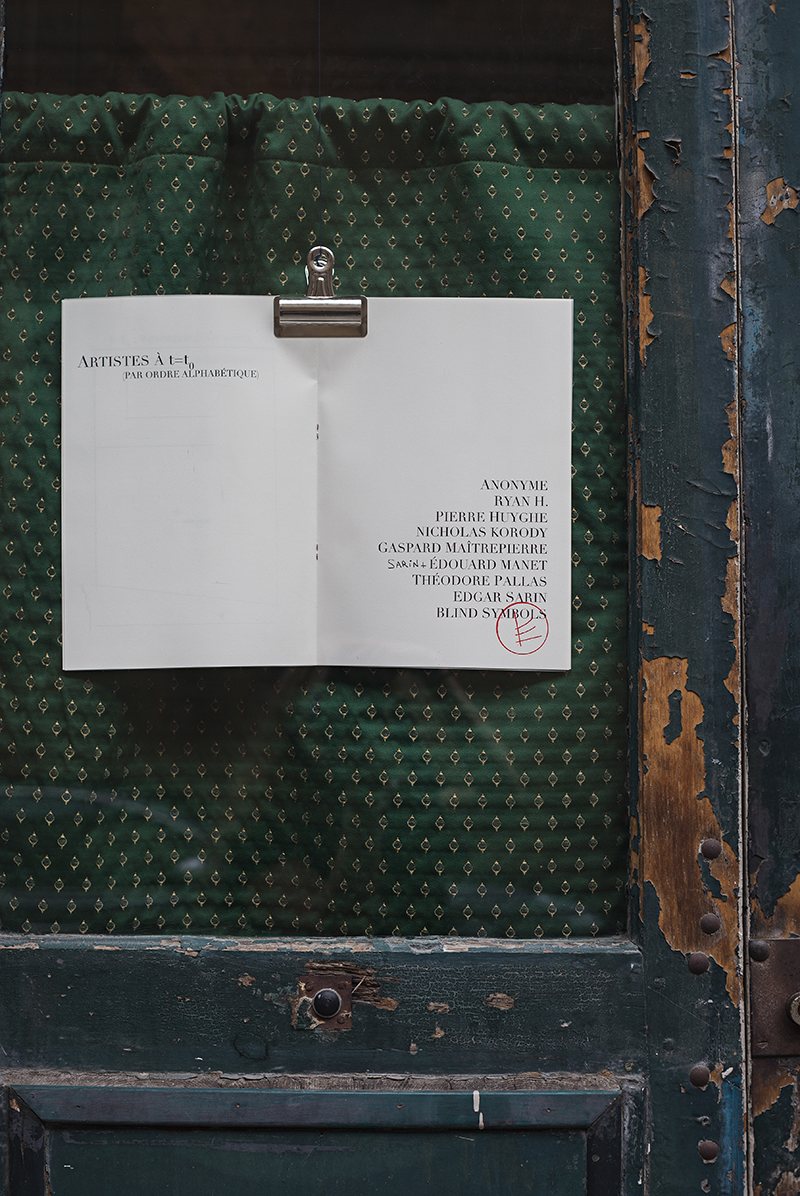
The door of Cercle de La Horla, 2015. Photo credit: Jovita Zavi.
I first encountered Sarin’s work a year ago, through his first solo show in Paris, called Introduction to the Problematic Entity. Among other works, Sarin showed a few of his Lifetime Concessions pieces which struck me instantaneously. These pieces are pictorial compositions locked up in wooden boxes and wrapped in kraft paper. On the day of Sarin’s death, the owner of the piece will receive a letter allowing him to open the box and finally see the artwork he has owned. Sarin is one who believes that desire stimulates one’s brain more than anything, and that genuine art is contained within this tensioned process of creation.
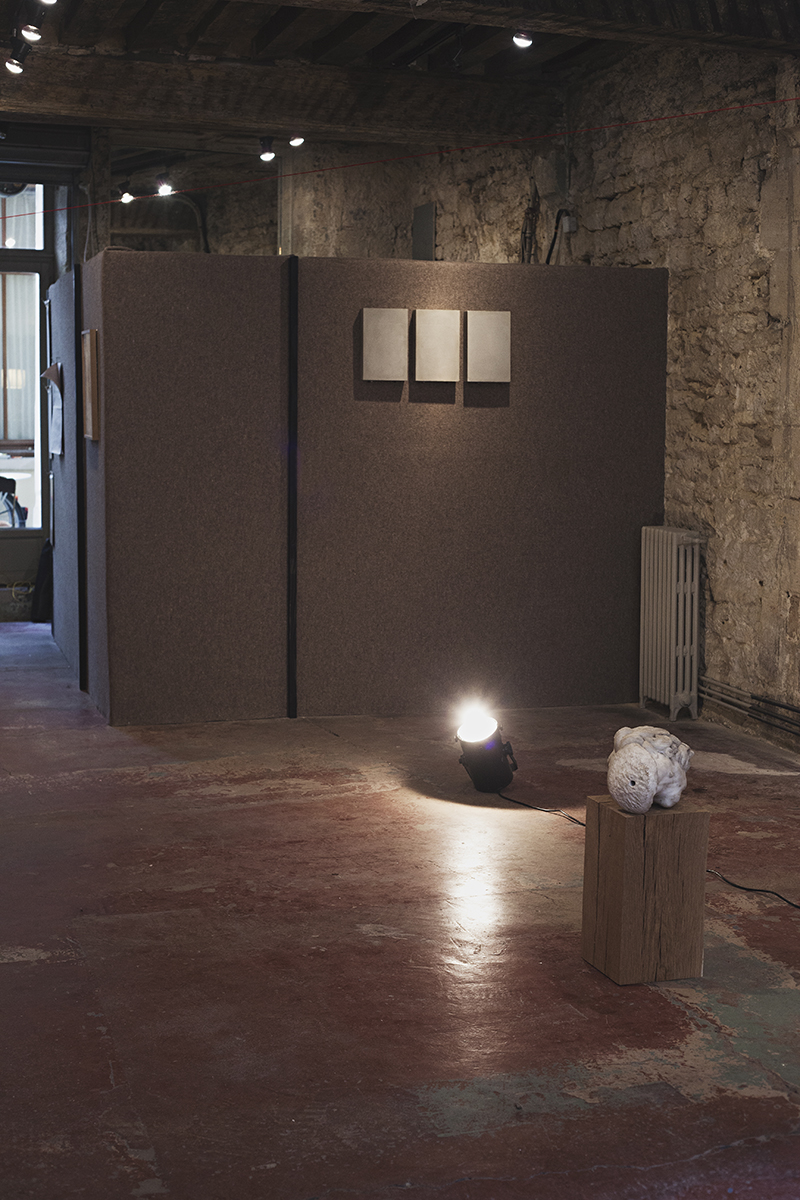
On the wooden stand: an Anonyme granite sculpture, late 18th century. At the back, Edgar Sarin’s One Midnights Paradox, concrete, 2015. Photo credits: Jovita Zavi.
As I arrived to the rue du Vertbois for the inauguration of the show, the walls of the gallery were empty. We could notice some staging items here and there such as a wooden stand in the middle of the room, a woman and a man dressed with aprons and white gloves standing against a wall, and another woman standing in an arched niche in the wall, holding in her right hand a bottle of champagne and in her left a bottle of red wine. Everything in the gallery, besides the questions and conversations of the people in attendance, remained still.
Suddenly, a tall man entered the room ringing a tuning fork. As the fork resonated, the gallery all at once came alive. The movement began at first with the aproned couple walking from the wall where they stood to the back of the gallery, retrieving the first artwork to be hung on the walls, Nicholas Korody’s. As the piece was being installed, a speech was given about the piece in three different languages—French, English and German.
This scenette was revealed in 22 minute intervals until each of the artworks were revealed, and thus properly opening the exhibition.
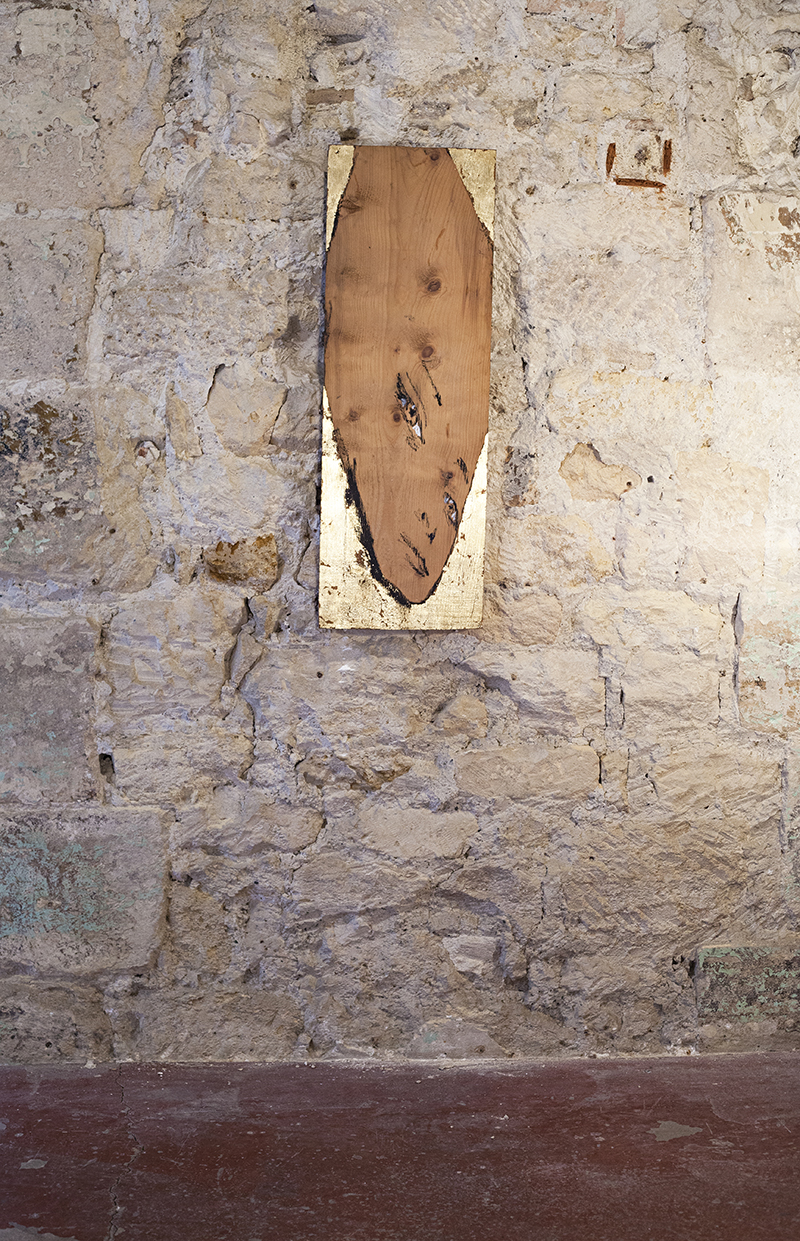
Gaspard Maîtrepierre, acrylic and gold leaves on wood, 2015. Photo credit: Jovita Zavi.
Among the artists introduced were the autodidact painter Gaspard Maîtrepierre, whose personal mythology demonstrates a research beyond all cultural and historical authorities; the well known Pierre Huyghe, with a spider that has been left to autonomy in the space; Blind Symbols, known as an artist collective that blindfolds the statues of Paris with red velvet; Ryan H., with a sample of his 99 representations of the Bicephale; and Edgar Sarin, presenting One Midnight’s Paradox, a concrete triptych in which has been poured a pictorial composition “discretized in elementary items.” The owner of this piece will receive, within seven years, a Lapis Lazulis to break the concrete panels and reconstruct the original work.
Also introduced were three tubes of paint that used to belong to the impressionist Édouard Manet, in a retroactive Joseph Beuysish manner, as if the future Art History could have, at the time, interfered with the ancient painter.
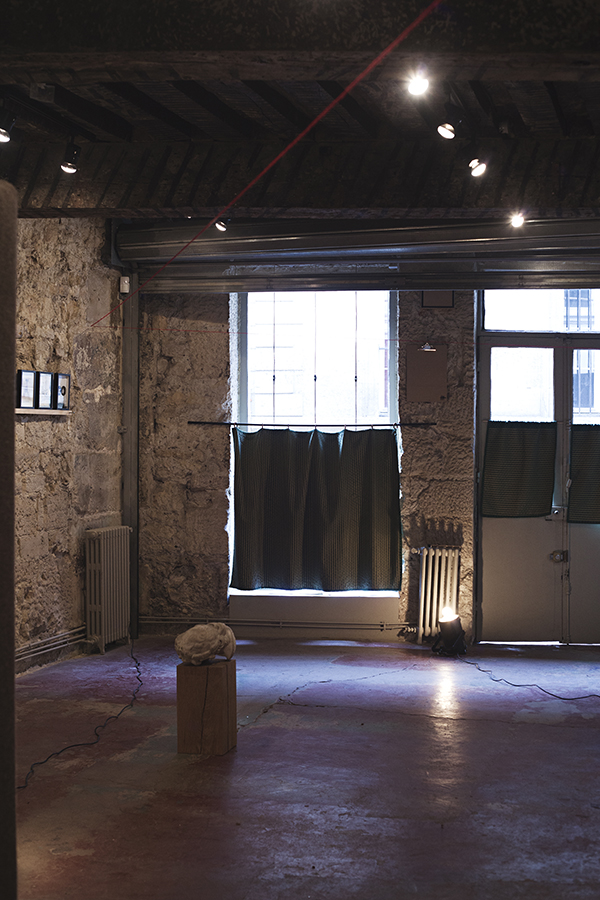
Blind Symbols, The red string, 2015. A piece that connects a wall of the gallery to a point in the city, half a mile away from its beginning. (Photo credits : Jovita Zavi)
“It is our belief that humankind stays calm only in movement; certain only in the flow of the possible,” Sarin says. Therefore, this show can be seen as an attempt to give up an ancient and obsolete static thought process (very fragile indeed) to leave room to a contemporary and organic vision of things, as each thing is an evolving and mutating system and one can’t predict it before it actually happens. Isn’t this the original definition of the word sustainable?
Very careful in exploring and reversing the way of showing art within a gallery space, Sarin proposes a mature snapshot of the world and its current problematic essence to be explored and explored again. The inauguration has already been followed by a few performances, including an experimental ultramusic gig and hypnosis experimentations.
I leave them now to their effervescent state and will report you the further evolution of the show a month from now.
—
Another very interesting point in this show will be its archiving. As said in the préface, it will go beyond photography or video, reaching the flesh of its protagonists through skills and knowledge learning. One can follow the daily updated diary of this Gesamtkunstwerk project on the Cercle de La Horla website.
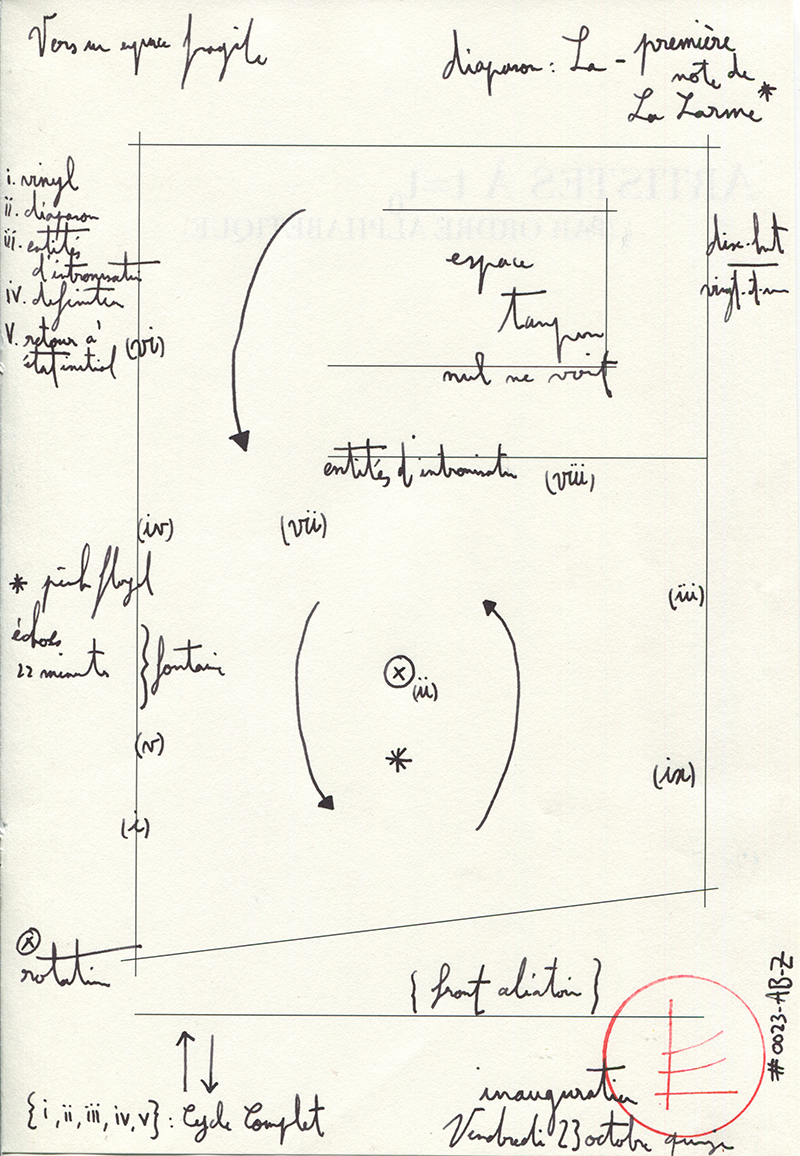
Description of the process of the inauguration. at Cercle de la Horla. Courtesy of Edgar Sarin
